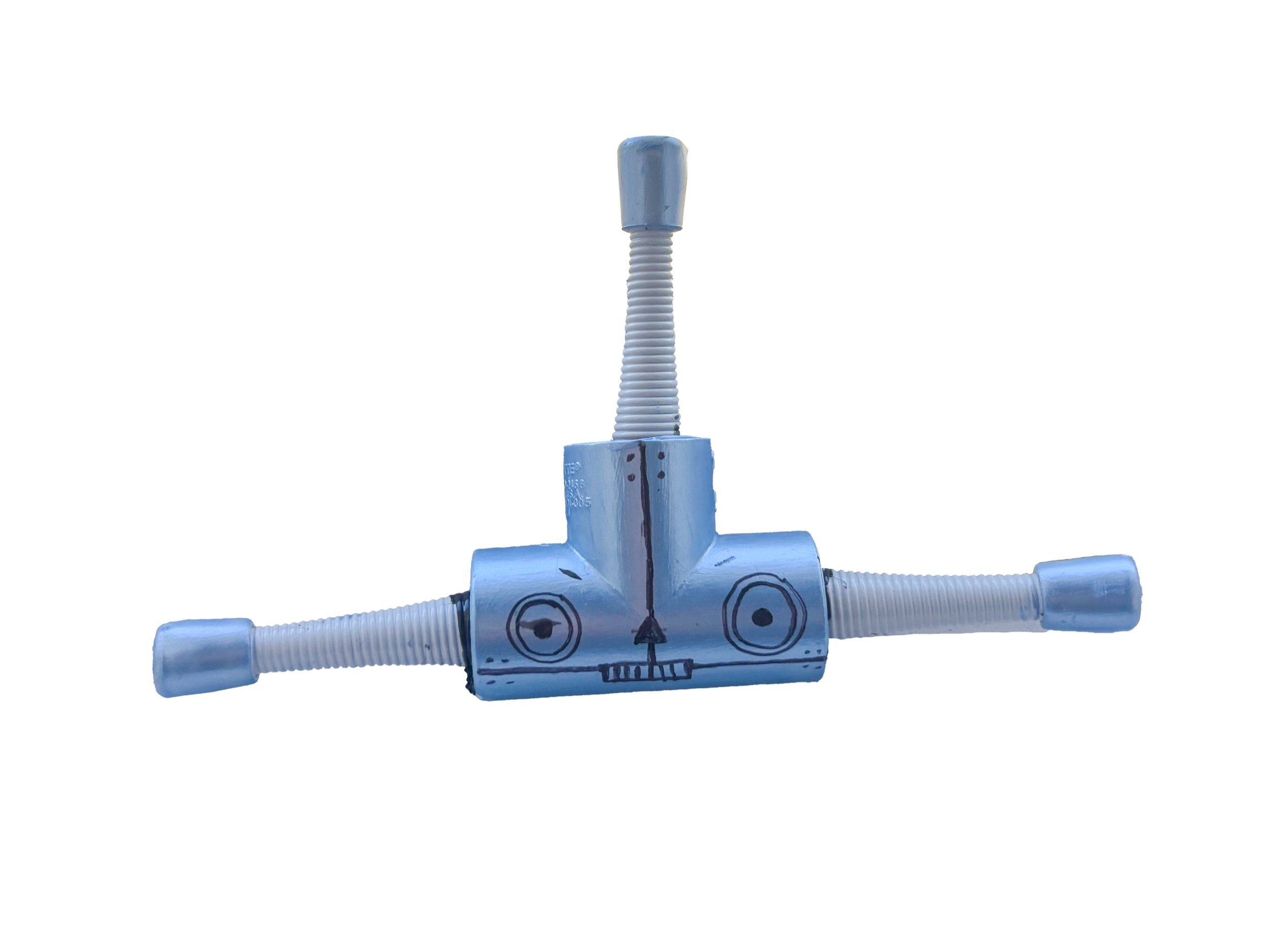
flexibot
speculative design
I ideated and created a toy based off of a prototype I built with $10 of materials from the hardware store. FlexiBot was designed as a fine motor toy for, but not limited to, children with developmental or cognitive differences, providing an opportunity for them to gain hand and finger mobility, grip, and and strength.
After speaking with a licensed occupational therapist, I learned that children often have a hard time focusing in therapy and lose motivation very quickly. The therapist’s are not provided with enough resources to continue therapy practices outside of the office or school setting. FlexiBot would allow for home integration and relieve therapist pressure.
The robot toy creates opportunities for play in learning though the personalized characters, playful techniques to utilize the grips and springs, and open-ended play with imagination, all values that children’s occupational therapy typically lacks.
I utilized AI and a partner’s illustrations to bring my hand-built prototype to life, working to create a friendly, cute, and colorful toy that would survive in a real world therapy setting. After lots of back and forth and post-AI editing, I finalized the style of the toy, ensuring they all looked friendly and had bright colors for easy recognition. The occupational therapist agreed that the toy would be extremely beneficial and the design suggests fine motor improvement!
Original hand built prototype.
Early product generations.
Final toy mockup generation.
character development
After creating the original toy, Dexter, my partner and I collaborated on creating a total of five different characters. Along with clever names and witty bios, we designed the shape of the toys to target different grip strength levels. Starting at Pinchy, the tube shape is a relatively basic grip, while Flexel’s X shaped body requires more advanced grip technique and finger mobility. Each character has differing spring resistance levels, ensuring the toys are accessible for children at any time in their OT journey. My partner and I designed character collectible cards to come with the toy; ideally the children would collect them all as their strength and skill level progresses. View below!








